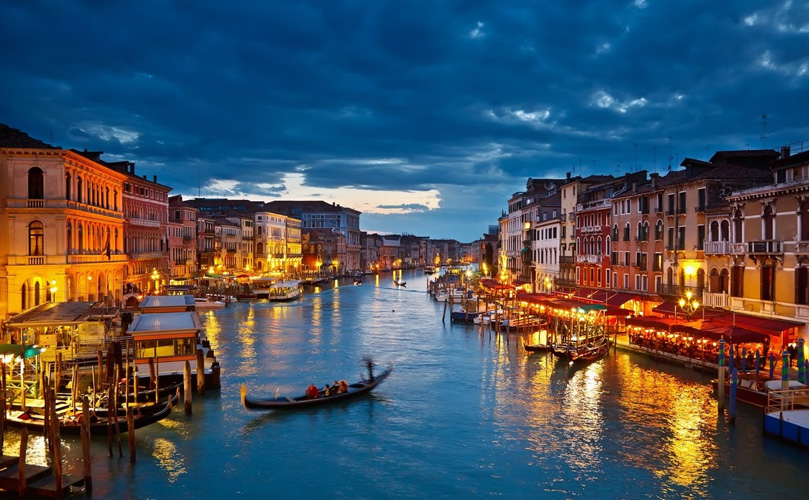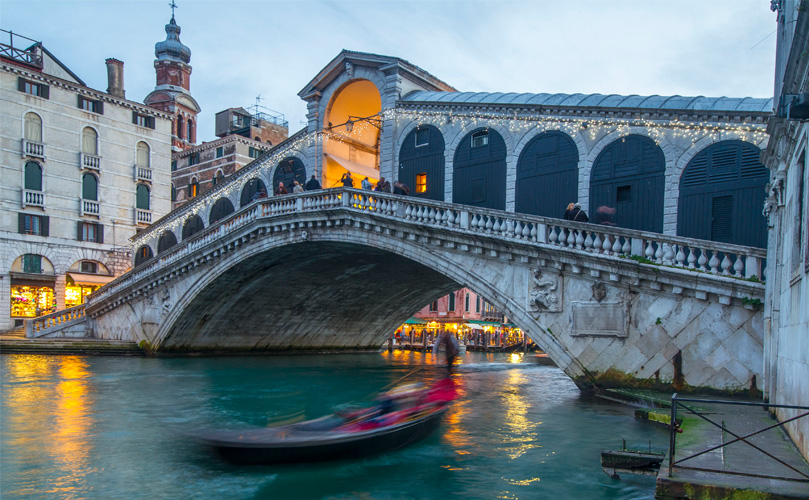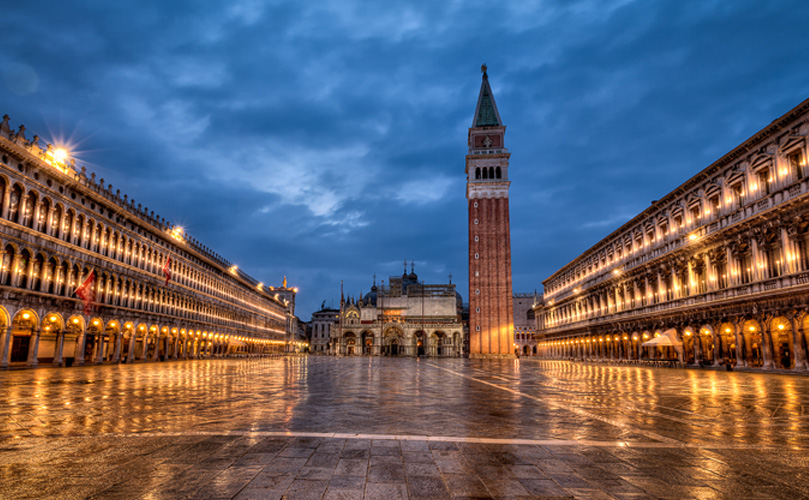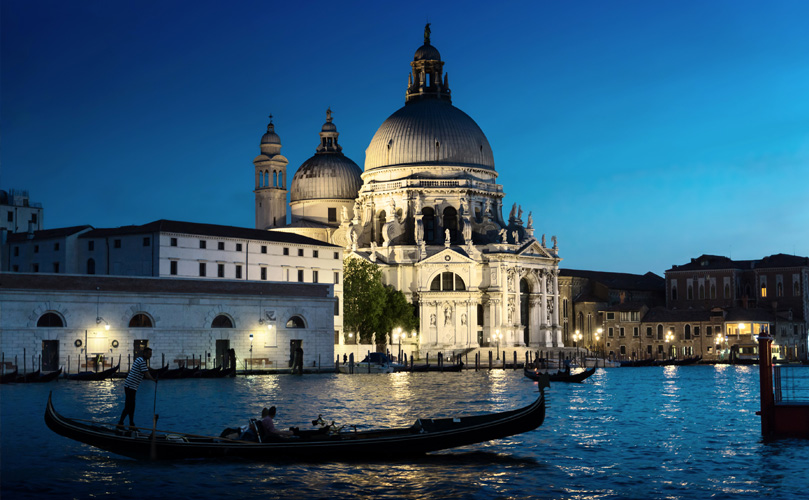

After the fall of the Western Roman Empire, northern Italy was overrun by the Lombards, a Germanic people from eastern Europe. Many of the local Italians escaped these incursions by withdrawing further and further into the Venetian Lagoon, a shallow bay in the north of the Adriatic Sea.
Over time, an entire city was built on hundreds of artificial islands created by driving wooden pylons into the ocean floor. Accessible only by boat, Venice was well protected against enemy attack, allowing a unique culture to flourish. Drawing on their Roman heritage, a republic was established to govern the islands, headed by a senate that elected a Doge ("Duke") who led the city for life.
In the ninth century, a group of merchants stole the remains of Saint Mark from a church in Alexandria and brought to Venice. Saint Mark, who is often represented by a lion, became the symbol of the city.
Venice relied totally on the sea. Their only natural resources were fish, salt, and glass (which is made from sand.) Since the Venetians had to important most of what they needed to live, Venice was forced to build extensive trade networks throughout the Mediterranean. This helped to make Venetian culture highly influential throughout Europe and the Near East. To protect their trade ships, the Republic built a massive navy comprising hundreds of ships. At the height of its operation, the Venetian Arsenale could build a fully operational warship from scratch in a single day.
Famous Venetian musicians include Claudio Monteverdi, Giovanni Gabrieli, and Antonio Vivaldi.



